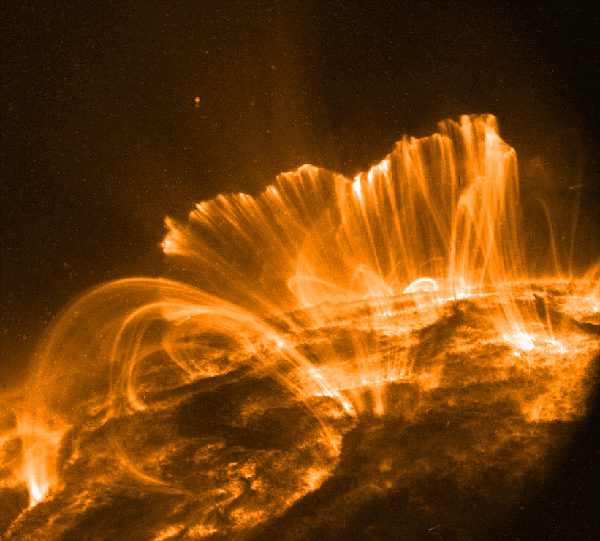EUNIS Solves Mystery of Sun's Super Hot Atmosphere
| Paula Marie Navarra | | Aug 03, 2014 11:04 AM EDT |
Scientists now understand why the sun's outer atmosphere or corona is far hotter than its surface.
Data from the Extreme Ultraviolet Normal Incidence Spectrograph (EUNIS) spacecraft launched on April 23, 2013 confirm that the small but extremely hot temperatures hammering the sun are consistent with only one current theory: nanoflares.
Like Us on Facebook
Incapable of being detected until now, nanoflares provide the mysterious extra heat that ignites the sun's outer atmosphere.
Using a very sensitive spectrograph, EUNIS recorded data from the corona every 1.3 seconds over a range of temperatures in the solar atmosphere.
A spectrograph is a device that gathers information on the number of materials present at a given temperature by recording different light wavelengths.
Jeff Brosius, a scientist from the Catholic University at Washington D.C., said data from EUNIS is a puzzle because things usually become cooler farther away from a heat source.
He explained that the photosphere, sun's visible surface, has a temperature of 6,000 Kelvin while the sun's corona reaches a temperature 300 times hotter.
Launched to a height of 200 miles above the Earth aboard a sounding rocket, EUNIS gathered six minutes worth of observation from above the Earth's atmosphere.
It scanned an active region of the sun which is the source of large solar flares and coronal mass ejections.
Adrian Daw, EUNIS principal investigator, said using EUNIS for this study was a less expensive way of producing a robust science find.
The EUNIS mission offers a valuable test bed for new technology that may subsequently be flown on long-term space mission.
EUNIS will fly again in 2016 where it will focus on different solar wavelengths that can spot the extremely high temperature materials like nanoflares.
©2015 Chinatopix All rights reserved. Do not reproduce without permission
EDITOR'S PICKS
-

Did the Trump administration just announce plans for a trade war with ‘hostile’ China and Russia?
-

US Senate passes Taiwan travel bill slammed by China
-

As Yan Sihong’s family grieves, here are other Chinese students who went missing abroad. Some have never been found
-

Beijing blasts Western critics who ‘smear China’ with the term sharp power
-

China Envoy Seeks to Defuse Tensions With U.S. as a Trade War Brews
-

Singapore's Deputy PM Provides Bitcoin Vote of Confidence Amid China's Blanket Bans
-

China warns investors over risks in overseas virtual currency trading
-

Chinese government most trustworthy: survey
-

Kashima Antlers On Course For Back-To-Back Titles
MOST POPULAR
LATEST NEWS
Zhou Yongkang: China's Former Security Chief Sentenced to Life in Prison

China's former Chief of the Ministry of Public Security, Zhou Yongkang, has been given a life sentence after he was found guilty of abusing his office, bribery and deliberately ... Full Article
TRENDING STORY

China Pork Prices Expected to Stabilize As The Supplies Recover

Elephone P9000 Smartphone is now on Sale on Amazon India

There's a Big Chance Cliffhangers Won't Still Be Resolved When Grey's Anatomy Season 13 Returns

Supreme Court Ruled on Samsung vs Apple Dispute for Patent Infringement

Microsoft Surface Pro 5 Rumors and Release Date: What is the Latest?










